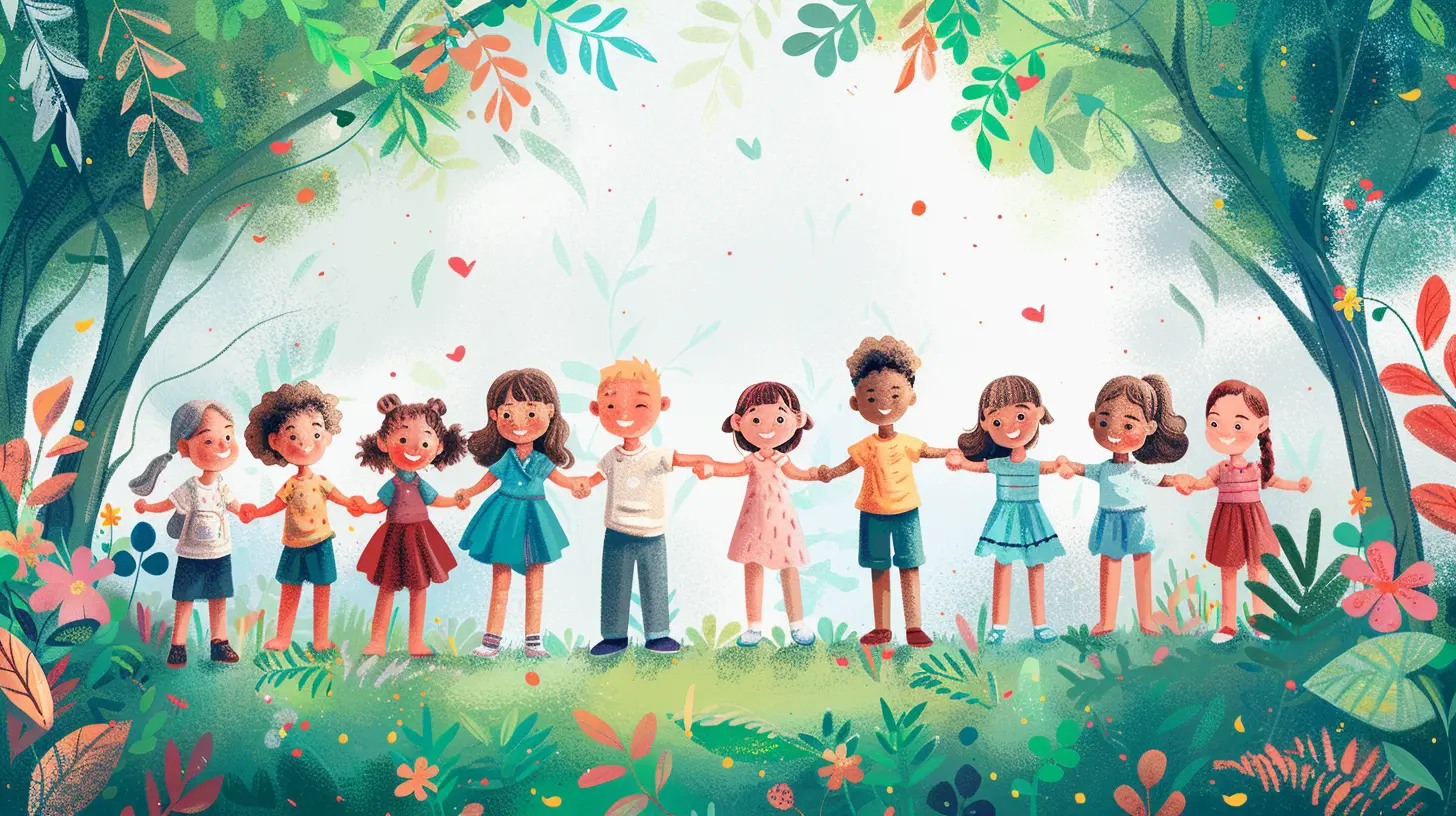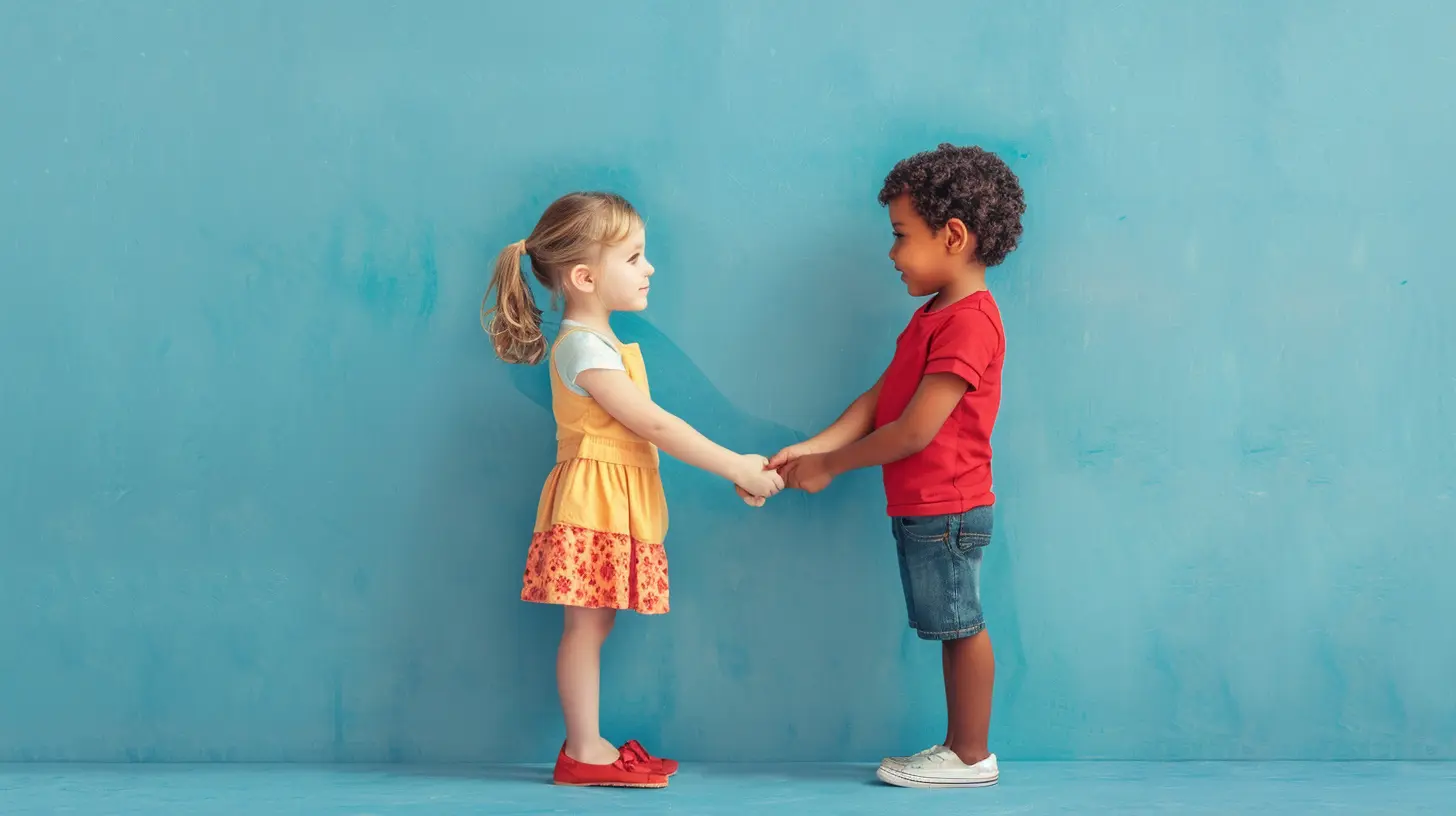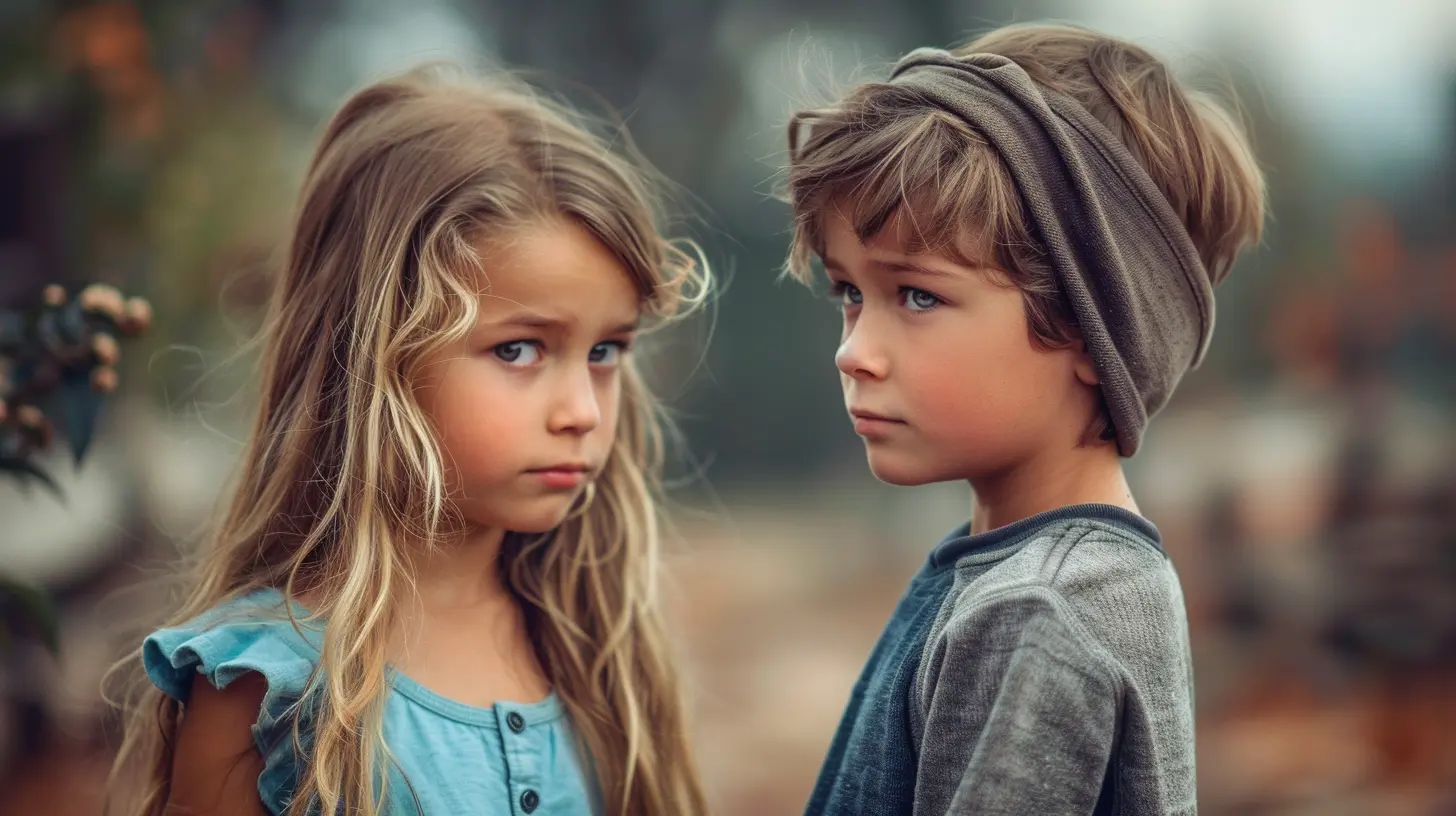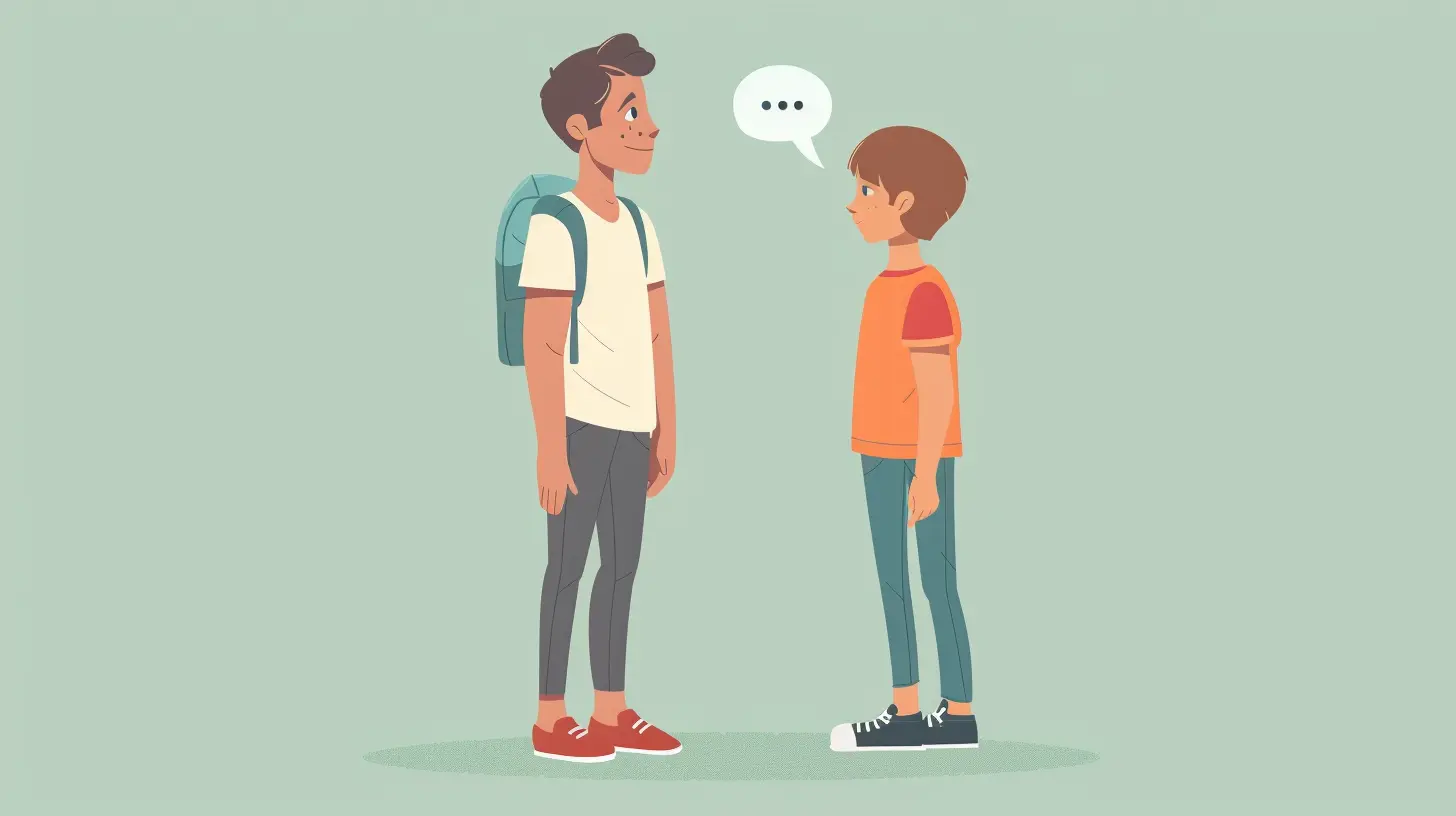Handling Bullying with Empathy: Teaching Kids to Be Upstanders
20 October 2025
Bullying. It's a word that makes most parents' stomachs turn. Whether your child is the target, the bystander, or—gulp—even the one doing the bullying, it’s a tough reality to face. But here's the thing: bullying isn't just a "kid problem." It's a human issue that demands empathy, understanding, and real conversations. And the good news? We, as parents, have more power than we realize to guide our kids toward being kind-hearted upstanders instead of silent spectators.
In this article, we’ll break down what bullying looks like today, why empathy is your secret weapon, and how you can raise kids who speak up, support others, and stand tall when things get rough.
What Is Bullying, Really?
Before we dive into solutions, let’s be crystal clear about what bullying actually is. It’s more than just kids being “mean” or having disagreements. Bullying is:- Intentional – It’s done on purpose.
- Repeated – It happens more than once.
- Power-imbalanced – One child has more power (physically, socially, emotionally) than the other.
It comes in different shapes and sizes: physical, verbal, emotional, and now—thanks to screens—cyberbullying. Think of it like a virus; it spreads fast, thrives in silence, and hurts deeply.
And yes, it’s heartbreaking. But we can do something about it.
Why Empathy Is the Game-Changer
Empathy is like emotional Wi-Fi—it connects us to someone else’s experience, even if we’re not living it ourselves. When kids understand how others feel, they’re less likely to be the bully and more likely to be the one who steps in—the upstander.Many of us grew up hearing “toughen up” or “just ignore it.” But we now know that empathy does more than just make kids “nice”—it actively prevents bullying by encouraging connection over cruelty.
So, how do we get there?
Start Early: Planting the Seeds of Empathy
Kids aren’t just born empathetic. It has to be taught, modeled, and nurtured—kind of like teaching them to brush their teeth (except, you know, for their hearts). Here’s how you start:1. Name Feelings Often
When your toddler is frustrated and throws a toy, don’t just say, “Stop it.” Try, “Looks like you’re angry because your block tower fell down.” Naming emotions helps them recognize feelings in themselves—and eventually others.2. Use Books and Stories
Children’s books are empathy goldmines. Characters who feel different, get picked on, or learn lessons about kindness stick with kids. After storytime, ask questions like, “How do you think she felt?” or “What would you do in that situation?”3. Model Compassion
Your kids are always watching you—like mini FBI agents. So when you show kindness, say sorry, or comfort a friend, they learn that being empathetic isn’t just right—it’s normal.
Who Are Upstanders, Anyway?
You’ve probably heard the term “bystander”—someone who stands by during bullying and does... well, nothing. But an upstander is different. An upstander:- Speaks up against bullying
- Supports the person being bullied
- Tells a trusted adult
- Refuses to join in or encourage the behavior
Think of an upstander as a quiet superhero—not always flashy, but always brave.
Teaching Kids How to Be Upstanders
Alright, now the million-dollar question: how do we teach our kids to stand up instead of stand by?Here are five strategies you can use at home—and trust me, they work better than lectures or PowerPoint presentations.
1. Role-Play Real Scenarios
Practicing what to say and do can make all the difference when a real situation pops up. Act out scenarios with your child. For example:- What would you do if someone calls your friend a name?
- What would you say if a group is teasing someone on the bus?
You’d be surprised how powerful a little practice can be. It builds confidence way before they need it.
2. Teach Assertive (Not Aggressive) Language
Standing up doesn’t mean throwing punches or yelling. Teach simple, assertive phrases like:- “That’s not okay.”
- “Please stop.”
- “Let’s go; we don’t have to watch this.”
These responses are short, respectful, and effective.
3. Build a Circle of Trust
Help your child identify safe adults they can turn to if something feels wrong—teachers, coaches, relatives, YOU. Sometimes kids freeze because they don’t know who has their back.Remind them: speaking up isn’t tattling—it’s protecting.
4. Normalize Speaking Out
Ever heard the phrase, “Snitches get stitches”? That toxic mindset is part of the problem. We need to flip the script. Celebrate when your child tells you about something they saw—even if it didn’t affect them directly.Make it clear: we value courage and integrity over silence.
5. Turn Mistakes into Moments
Kids mess up. Maybe your child doesn’t step in. Maybe they laugh nervously. Don’t scold—coach. Use the mistake as a teaching moment. Ask them what they could try next time. Growth matters more than perfection.When Your Child Is the Target
No parent wants to hear that their child is being bullied—it’s like a punch to the gut. But here’s how to support them and help them reclaim their power:- Listen fully – Don’t interrupt or minimize.
- Validate their feelings – Say, “That must have felt really scary” instead of “Just ignore them.”
- Document everything – Keep records if it escalates to involving the school.
- Practice responses – Role-play what they can say or do.
- Rebuild confidence – Get them involved in activities they love.
Remember: this isn’t about “fixing” your child; it’s about reminding them they’re not alone.
When Your Child Is the Bully
Okay, deep breath. If you find out your child has been bullying others, don’t panic—or go into denial.Kids act out for all kinds of reasons: insecurity, peer pressure, lack of coping tools. What they need isn’t shame—they need guidance.
- Have a calm conversation – Get to the root without leading with anger.
- Teach accountability – Help them understand how their actions affect others.
- Make it right – Encourage apologies, meaningful consequences, and learning moments.
- Watch closely – Stay involved and loop in teachers or counselors if needed.
Punishment alone won’t change behavior—but empathy can.
The Power of Positive Peer Pressure
Want to know the truth? Most bullying situations aren’t stopped by adults—they’re stopped by other kids. Peer influence is powerful. When just one student speaks up, it can change the whole vibe of a group.Encourage your child to be a quiet leader in their own way. They don’t have to be loud or dramatic—they just need to step toward kindness instead of away from conflict.
And trust me, kids pick up on this faster than we think.
Use Tech for Good
Since so much bullying happens online now, we need to be just as proactive in the digital world.- Talk About Digital Boundaries – What’s okay to post? What’s not?
- Teach the Power of Screenshots – They can be a helpful record when things get ugly.
- Encourage Digital Upstanding – Kids can report, block, or support someone privately if public confrontation feels too scary.
In short: just because it's online doesn't mean it's out of bounds.
Build a Culture of Empathy at Home
It all begins at home. The way we talk about others, the way we handle conflict, and the way we treat people who are “different”—our kids absorb all of it.Empathy isn’t a one-time conversation. It’s a lifestyle.
So, praise kindness. Tell stories of bravery. Ask your kids how they showed empathy today. Keep the dialogue open so they always feel safe coming to you.
Because in the end, you're not just raising a child—you're raising someone’s future friend, classmate, coworker, or even leader.
Wrapping It All Up
Handling bullying isn’t just about stopping bad behavior. It’s about creating a world where kindness is the norm, not the exception. It’s teaching our kids that courage doesn’t always wear a cape—it often shows up in the quiet moments when they choose to care.So let’s raise upstanders. Let’s raise kids who listen deeply, speak bravely, and act kindly.
We owe it to them. And honestly? The world could use more of that.
all images in this post were generated using AI tools
Category:
Teaching EmpathyAuthor:

Tara Henson
Discussion
rate this article
1 comments
Liora McGee
What a vital topic! Teaching our kids to be upstanders not only empowers them but also fosters kindness and resilience in our communities. Let's equip them with empathy to create a better world together!
October 28, 2025 at 5:47 PM

Tara Henson
Thank you! Empowering kids to be upstanders is essential for nurturing empathy and kindness, making our communities stronger. Together, we can create lasting change!


